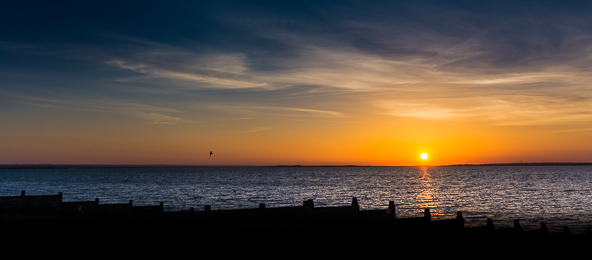Overall Comments
Overall I thought this was an encouraging start to the course. You have done well here to link everything together not only geographically but also thematically. The pictures showed a variety of interests, each of which could be mined for further study at a later date. I thought your airfield picture was a particularly interesting use of colour and could be an area worth exploring more in the future. My feedback below is mainly a series a rhetorical questions that might help you think about how to structure your working method for later modules. Photography is a form of communication so try to think about what you are trying to say.
I agree that the chosen location was an interesting subject and I fully intend to revisit it during the course. I will be mindful of what my images are trying to project and perhaps more crictical when I take them.
Assessment potential
Assignment 1
You may want to get credit for your hard work and achievements with the OCA by formally submitting your work for assessment at the end of the module. More and more people are taking the idea of lifelong learning seriously by submitting their work for assessment but it is entirely up to you. We are just as keen to support you whether you study for pleasure or to gain qualifications. Please consider whether you want to put your work forward for assessment and let me know your decision when you submit Assignment 2. I can then give you feedback on how well your work meets the assessment requirements.
Feedback on assignment
Demonstration of technical and Visual Skills, Quality of Outcome, Demonstration of Creativity
Generally the pictures were technically acceptable so you don’t have too much work to do in that area. Some of the reflections helped tell the viewer that this was a museum whilst others were more of a distraction so you will need to watch for that in future. I felt your strongest pictures were the landscape pictures made outside, but the indoor photographs added some very useful context for your series.
I would suggest caution with the excessively wide angle, almost fish eye, lens. Whilst it almost works with the Spitfire (?) image, you can see on your contact sheet that it causes problems in other scenes such as the notice board.
Looking at the contact sheet, I would suggest you try to shoot more. If these are all the pictures you made then try to make more exposures at each scene, experimenting with different settings and lenses/zooms. The entrance hall picture could for instance have benefitted from a slightly different angle. Shooting more at the scene would have given you options when it came to editing.
Whilst it is absolutely fine in this assignment to lay the pictures out however you choose, try to think about how your pictures link together as you complete later assignments. Does it make sense to then switch between colour and black and white? Do the aspect ratios of the different pictures need to be the same throughout a series? How would you display your pictures to a viewer -on a wall, on a website or in a book? What is the most appropriate option for the particular body of work you are making?
I can see that mixing orientation, colour and sizing can be distracting for the viewer and it would’ve less distracting within the panel of work if I’d have placed the work consistently with colour, size and how I inteneded the work to be displayed.
I will re-visit the images in Lightroom and make a decision as to which works best colour or black and white. My gut feeling is colour primarily because some landscape images were taken at low light and I still want to convey that and think it will be lost in monochrome.
Research
Context, reflective thinking, critical thinking, analysis
So far your research appears thorough. It was especially good to see you referencing your reading within the assignment text. Your thoughts on artists such as Cornish and Hunter will form a good start for your learning log or blog. I have added the names of some more artists who you might find interesting to the suggested reading section below.
Learning Log
Context, reflective thinking, critical thinking, analysis
I will comment on the learning log when submitted in an upcoming exercise.
Suggested reading/viewing Context
As you mention an interest in landscape photography I have compiled a list of artists you mayor may not be aware of below who, at least in part, work with landscape imagery. Each works in a slightly different way and their methods of approaching the landscape are integral to their practices.
Fay Godwin -In our Time special- https://www.youtube.com/watch?v=4JE8144Ak70 Jem Southam -The Painters Pool- http://www.vam.ac.uk/content/articles/I/landscapephotogra phy-jem-southa m/
Todd Hido -A Road Divided (see the ‘landscapes’ section of his website for an idea of his approach – http://www.toddhido.com/)
Liz Nicol-The Rubber Band Project – http://www.liznicol.co.uk/The-Rubber-BandProject-1997
Jo Spence -Remodeling Photo History http://www.jospence.org/remodellingphotohistory/rphthumbs.html Awoiska van der Molen – Sequester-
http://www.awoiska.nl/pages/page. php ?page=book
Keith Arnatt -A.O.N.B. http://www.tate.org.uk/art/artworks/arnatt-aonb-area-ofoutsta ndi ng-natu ra l-beauty-t13129
Misha de Ridder -Dune – http://www.lavalette.com/shop/dune-misha-de-ridder/
Pointers for the next assignment / assessment
- Try to shoot more pictures at each site. What happens when you frame the scene differently? Or change the aperture and shutter speed?
- Think about how you present your final photographs -how do you intend a viewer to look at them?
Overall for my first assignment I am pleased with the comments and constructive critique and take on board the pointers for the next assignment.
